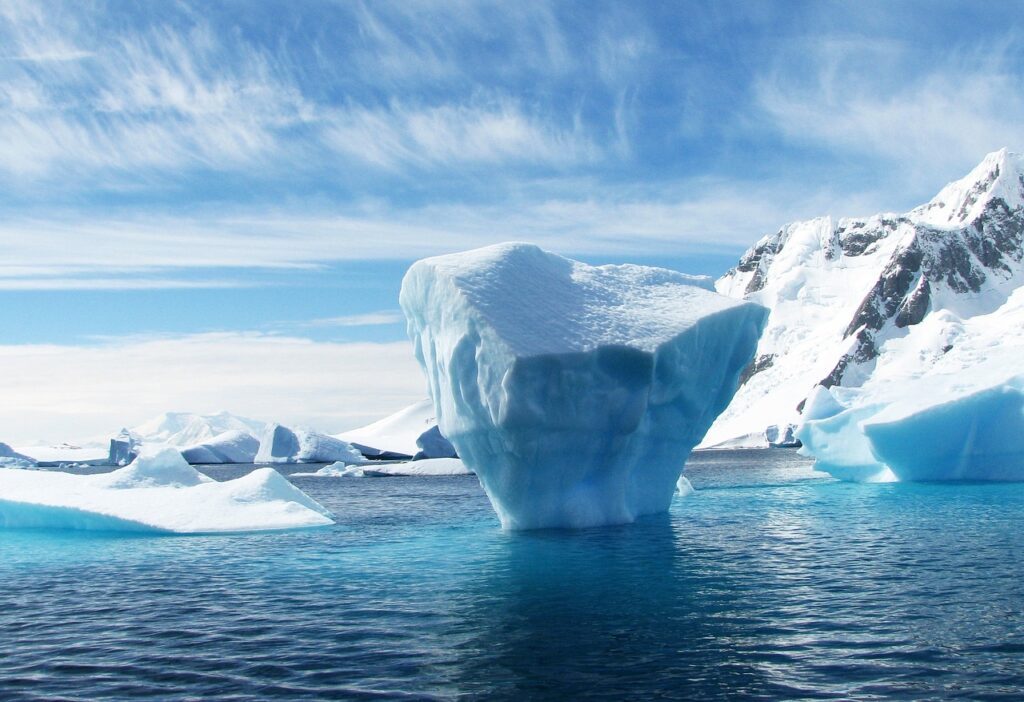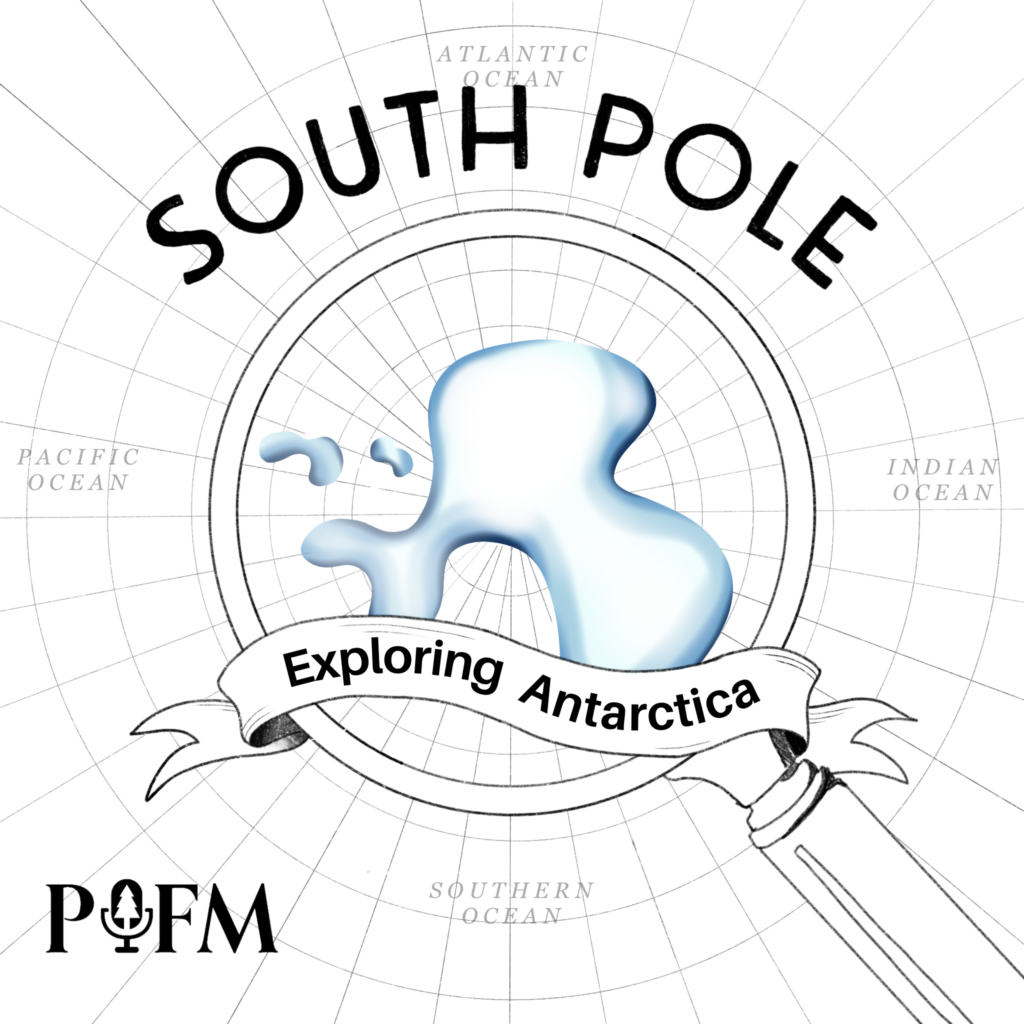
Locked inside the 14 million cubic kilometers of the disappearing Antarctic ice sheet is enough frozen water to bring the surface of the ocean 57 meters closer to the clouds.
I am a science communicator and host of South Pole, a podcast about the science of Antarctica. In creating this series I have learned how ice sheet melt is, unfortunately, only one of many concerns. As global mean temperatures continue to rise, Antarctica will become home to numerous climate feedback loops.
Whether I am interviewing a scientist about ice cores, toothfish, or counting seals from space, one common thread that has come through each of my discussions with researchers across a wide variety of disciplines is that what we do up here has an impact down there and what happens down there will make its way back up to us again.
Meanwhile, broad based understanding of the growing concerns around this shrinking continent is indicative of a major failing of scientific outreach. A recent survey in Australia, home to one of the Big 5 Antarctic gateway cities, found that 49% of the public is not aware that Antarctica is in fact a frozen landmass. This figure was even lower in the United States.
This is something we must correct. Quickly.
The bad news is that even experts of this very topic say we don’t currently have many pathways for public engagement with our southernmost continent. The good news is that we can create them.
Let’s get the bad news out of the way first. I recently spoke with Dr. Katie Marx and Dr. Elizabeth Leane, two Antarctic social scientists who co-chair PEAR, the Public Engagement with Antarctic Research action group at the Scientific Committee for Antarctic Research (SCAR).
When asked how people from around the world can get involved with Antarctica, Dr. Marx said plainly, “It’s really tough right now… If somebody says, ‘I’ve seen a documentary about Antarctica, and now I want to help.’ What can they do? There’s not many answers to that question right now, and that’s really where we need to focus.
It’s been true for a long time the media has proven useful in increasing awareness about Antarctica. It’s likely that the hypothetical documentary was David Attenborough’s Frozen Planet. Dr. Elizabeth Leane explained that with increased coverage of the Anthropocene in news media, Antarctica has “moved to the center of people’s consciousness.” But there is still a gap between awareness and engagement.
Moving on to the good news, one of the main research goals of PEAR is to find meaningful platforms for participation, and it looks like we’ve got options.
Breaking down Hierarchies
The first step to bring more people in is to stop shutting people out. Dr. Marx described one hierarchy within Antarctic circles wherein those who have set foot in Antarctica sit above those who haven’t and another in which those with a rigorous scientific background supersede anyone else. Dr. Marx believes this contributes to an exclusivity that is counterproductive to the mission of Antarctic conservation. Instead, she argues we should say,“You can be an Antarctican even if you’ve gone as a tourist, even if you never get to go in your entire life, because that is the vast majority of people.”
In the same vein, Dr. Leane adds, “We have to encourage people who haven’t gone to Antarctica to take a real interest in it and to see it as a badge of honor, in fact, that they haven’t been there, because by not going, then you are protecting it.”
Science Communication to emphasize areas for engagement
Now that we’ve invited everyone to the table, what do we serve them? Existing channels of Antarctic media and science communication are pretty good about getting people interested (shout out to David Attenborough). However, In addition to conveying research and results, they should also point people toward opportunities for involvement. I asked Dr. Marx what these might be, and she pointed in the direction of national Antarctic programs. We should be communicating what our countries’ involvement is with Antarctica and whether they are a signatory to the Antarctic Treaty. She also pointed toward organizations like Antarctic Heritage Trusts that also provide avenues for individuals to help preserve and share the cultural heritage of the continent. By highlighting these opportunities, science communicators can foster greater public engagement and support for Antarctic conservation.
What about Citizen Science?
Dr. Marx also highlighted the emergence of citizen science projects that allow people to contribute remotely. Another scientist I spoke to on the South Pole Podcast is Dr. Michelle LaRue. She told me all about the Species From Space which leverages satellite imagery to trace populations, movement, and other behavioral choices of Weddell seals. In this particular project, citizen scientists were instrumental in data analysis. Images were uploaded to a database and curious citizens from anywhere in the world were able to log on to an online platform and start counting small black dots in the snow. Many people working in the Antarctic sector spend their time analyzing samples and data that was collected by their colleagues and sent around the world. In the digital era, scientists should be looking for opportunities to involve the public and science communicators should be sharing them.
Where you can start today.

If you have made it to the end of this blog post and you are interested in engaging with Antarctica yourself, I would point you to the South Pole podcast, which is itself, a project of public engagement. In addition to finding full conversations with the scientists I mentioned in this blog, each episode features in-depth interviews with Antarctic researchers, sheds light on how our actions impact Antarctica and vice versa, and highlights opportunities for involvement.



This was such an insightful read – thank goodness for citizen and science journalists, keeping us up to date and doing the work on behalf of the planet.